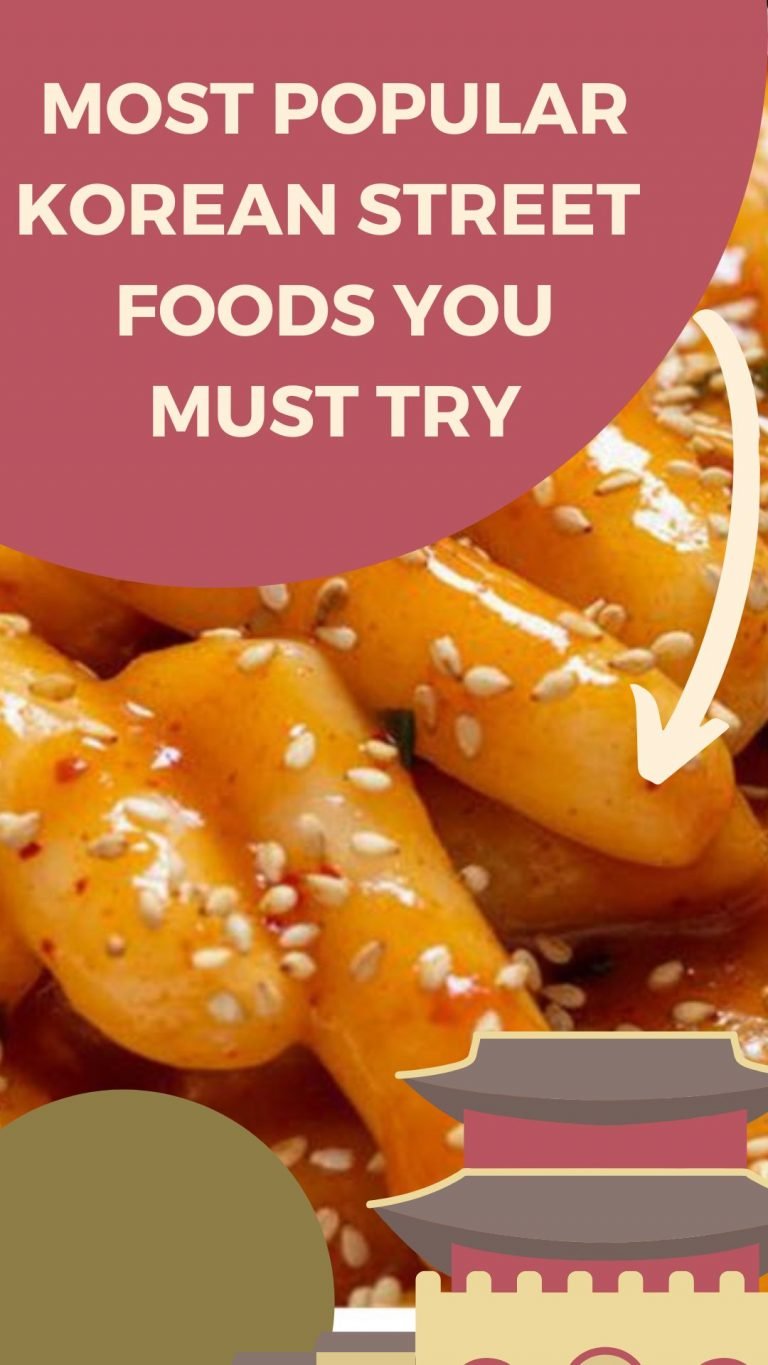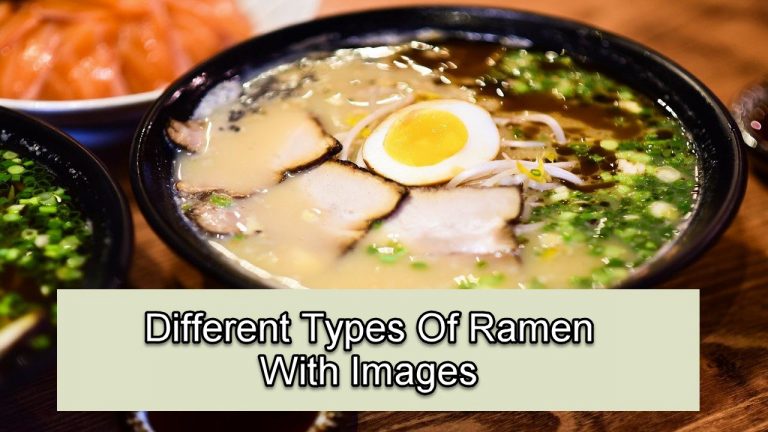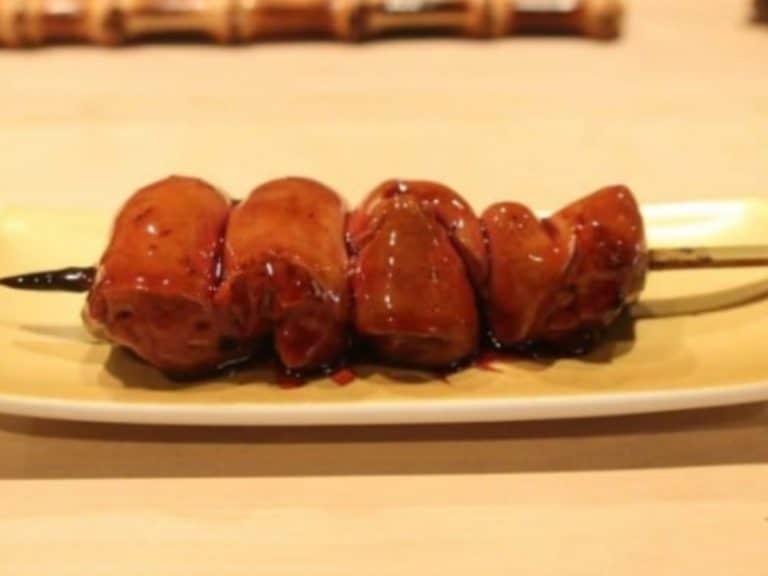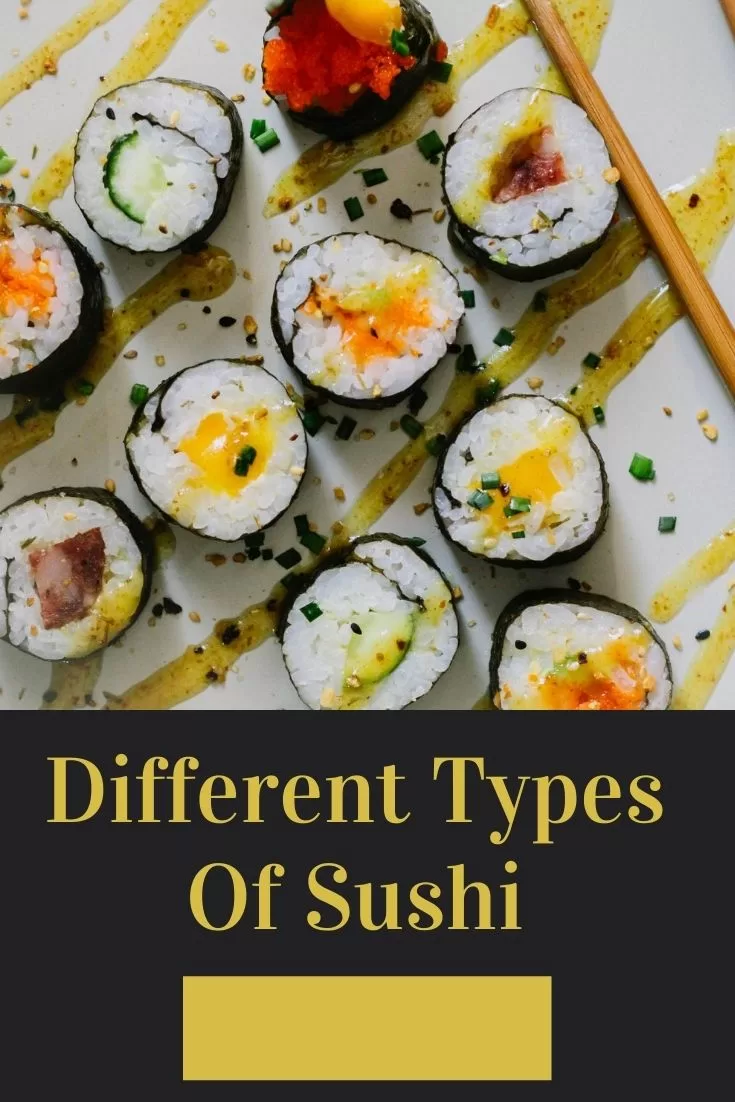15 Most Popular Japanese Street Foods You Must Try
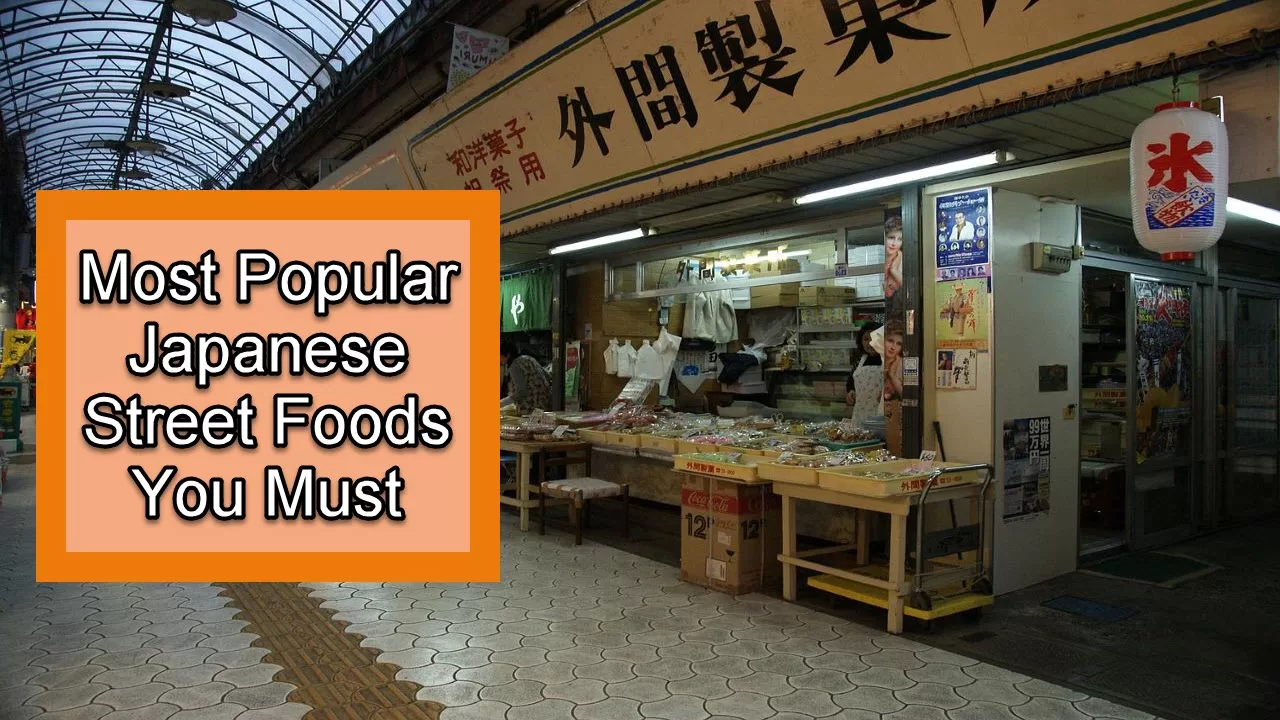
The unavailability of night market in Japan makes the street food Japanese culture less prominent than that of other Asian countries. Different kinds of savory and sweet delicacies, on the other hand, are constantly available during various festivals. If you are planning to visit Japan, you will notice that eating noodles on the side of the street on Tokyo or Osaka is not common. However, there are a few street food items to await once you go to Japan. You can try takoyaki and soft ice cream.
This article discusses the most popular Japanese street foods that you should taste if you ever visit Japan. Continue reading if you want to learn more about these Japanese street foods.
Japanese Street Food
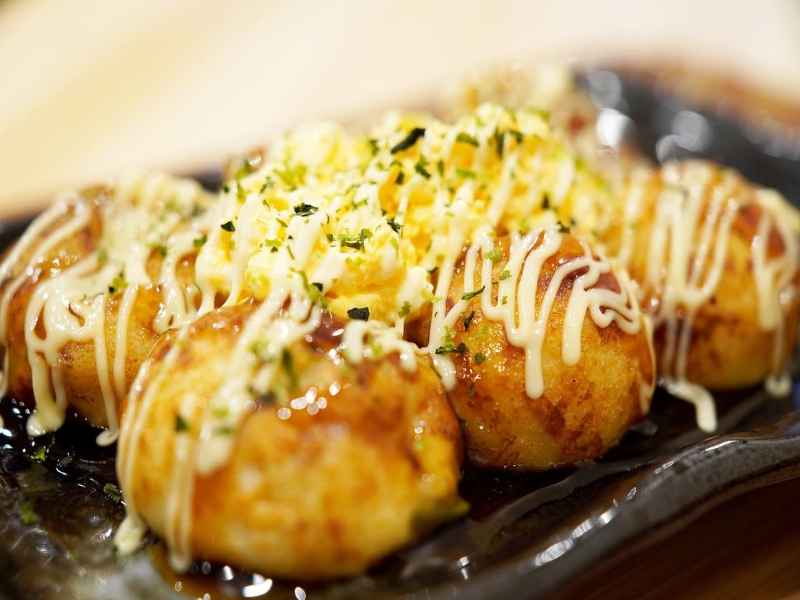
Takoyaki (Octopus Balls)
Takoyaki is a popular street food snack and festival food consisting of a wheat flour-based batter baked in an unique molded pan. Tako (minced or diced octopus), tempura scraps (tenkasu), pickled ginger (beni shoga), and green onion (negi)are the common fillings. The balls are coated with a mixture of a savory brown sauce similar to a Worcestershire sauce, and Japanese mayonnaise, then topped with green laver (aonori) and dried bonito shavings (katsuobushi).
Yaki is derived from the Japanese word, yaku, a Japanese cooking method that means “to grill”, and may also be found in the names of other Japanese cuisines like okonomiyaki and ikayaki, and other popular Osakan dishes.
Takoyaki was initially popularized in Osaka, where it was invented in 1935 by a street vendor named Tomekichi Endo. Takoyaki was inspired by akashiyaki, a tiny spherical dumpling consisting of an egg-rich batter and octopus from Akashi, Hygo Prefecture. Takoyaki originated in the Kansai region of Japan and then moved to the Kant region and other parts of the country. Takoyaki is often linked with yatai street food stalls, however there are numerous well-established takoyaki speciality restaurants around Japan, especially in the Kansai area. Takoyaki is increasingly available at places including grocery stores and 24-hour convenience stores.
Aizuya in Osaka is the earliest known takoyaki shop. It has been operating since the 1930s, and was founded by Tomakichi Endo. Endo used beef and konjac in the initial takoyaki, but later swapped to the now-traditional octopus and flavored the batter. The takoyaki are then served with a brown sauce that tastes like Worcestershire. As takoyaki’s cultural range has expanded in western areas of the world, it may now be consumed with a variety of toppings and tastes. The dish, called “octopus balls,” immediately gained popularity in Japan.
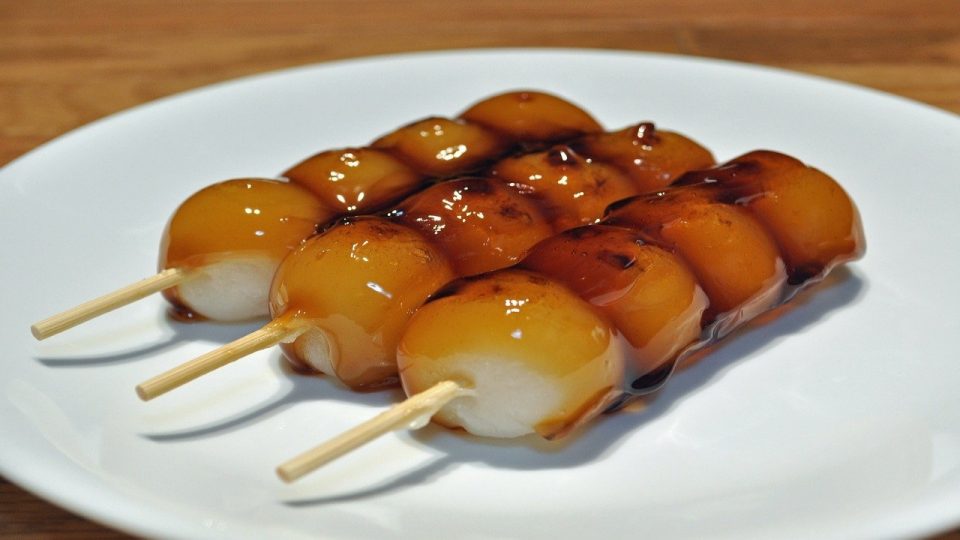
Dango
Another popular street food snack is Dango. It is a skewered rice dumpling made with uruchi and glutinous rice flour. It has a chewy texture like a mochi, and can be coated or glazed in a variety of ways. Dango is normally finished circular shaped and served on a skewer with three to five dango. Dango is usually classified as wagashi and is frequently eaten with green tea. It is consumed all year, but different types are usually consumed throughout specific seasons.
There are several various kinds of dango, but mitarashi dango is one of the most popular. A sweet salty soy sauce glaze, mixed with sugar, and starch. Hanami dango, which is a tri-colored dango, kinako dango, which is sprinkled with toasted soy flour, and anko dango, which is coated with red bean paste, are all popular forms of dango.
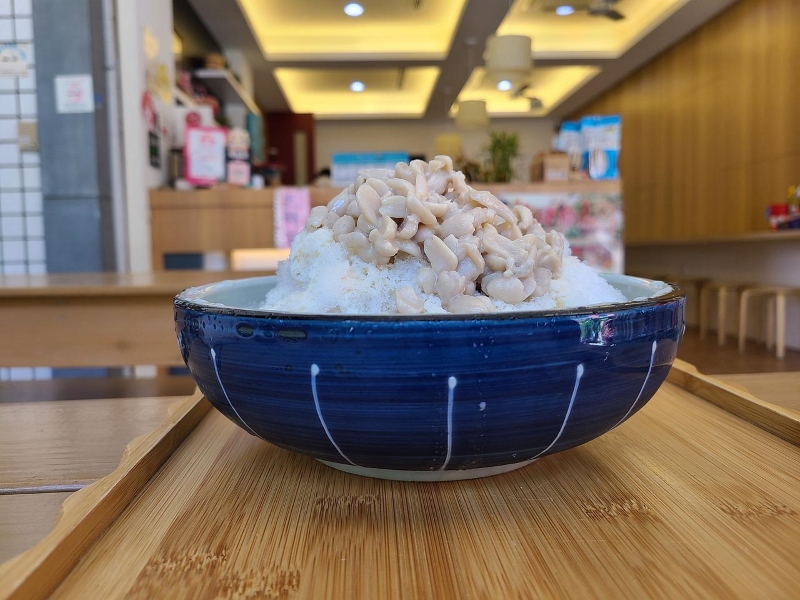
Kakigori (Shaved Ice)
Kakigori is a shaved ice delicacy from Japan that is flavored with syrup and a sweetener, usually condensed milk. Kakigori is similar to shaved ice in the West, it is usually available in unique flavors such as matcha green tea and lemon. Mochi balls, whipped cream, and sweet red bean paste are also included in the Japanese shaved ice.
In Japan, July 25 is known as kakigori day because its pronunciation sounds similar to summer ice. Another explanation for July 25 being kakigori day is because it was recorded a high temperature in Japan on during that day in 1933.
A hand-cranked machine spins a block of ice over a razor blade in the traditional method of producing kakigori. Despite the prevalence of electric shavers, street food vendors may still be seen shaving ice blocks by hand in the summer.
It’s similar to a snow cone, but with a few major distinctions: the ice is considerably smoother and fluffier, comparable to freshly fallen snow, and it is typically eaten with a spoon. Kakigori is distinguished from other shaved ice desserts by the texture of the ice.
Strawberry, cherry, lemon, green tea, grape, melon, “Blue Hawaii,” sweet plum, and colorless syrup are all popular flavors. Some stores use two or more syrups to create colorful variations. Condensed or evaporated milk is sometimes put on top of kakigori to sweeten it.
Kakigori is served in festivals, coffee shops, convenience store, specialty kakigori parlors, and restaurants in addition to street kiosks. Japanese locals commonly make it at home as well. During the hot summer months, kakigori is widely available across Japan. Often offered with other street foods such Japanese yakisoba, takoyaki, and cotton candy at summer festivals and fairs such as matsuri and bon odori festivals. In Japan, kakigori is one of the summer attractions. It’s offered with ice cream and sweetened red beans or tapioca pearls in some places.
This is definitely a must-try street food in Japan. If you truly want to understand Japanese culture, go to a summer Japanese festival and get a kakigori while wearing a yukata beneath a sky filled with fireworks. This is the finest way to eat this refreshing dessert.
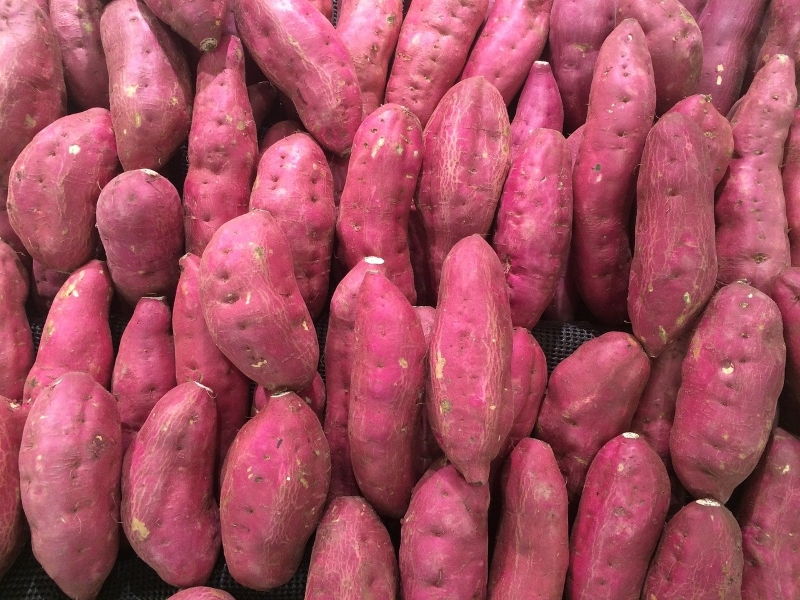
Yaki Imo
A classic Japanese street food dish prepared with roasted sweet potatoes is known as yaki imo. Satsuma-imo, a kind of Japanese sweet potato, is roasted or cooked over charcoal and served in paper packets as a snack.
Satsuma potatoes are typically used in yaki imo, although annou, milk sweet, and beni haruka potatoes can also be used. To enable the potato’s inherent qualities to come through, washed potatoes are tossed over coals without being seasoned or buttered.
Yaki imo has a pleasantly chewy skin and soft juicy flesh when cooked properly.
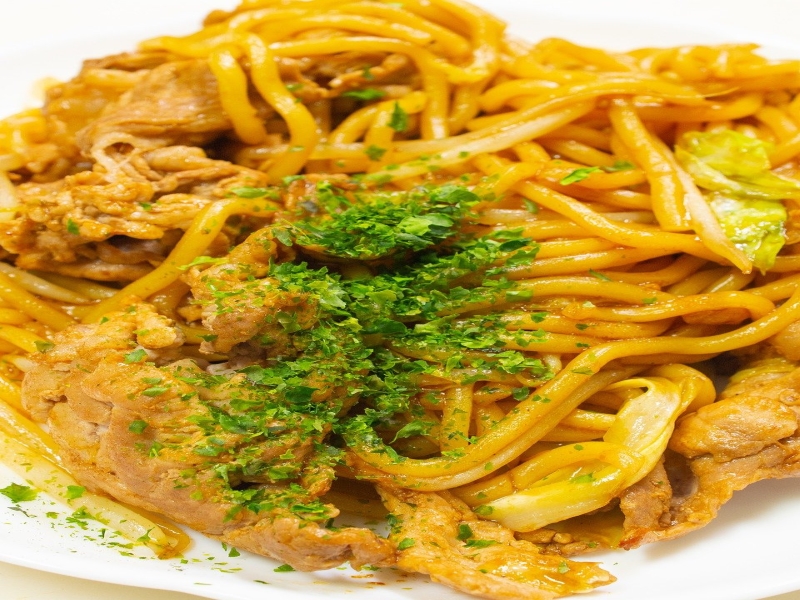
Yakisoba (Fried Noodles)
Yakisoba is a Japanese noodle stir-fry dish that meaning “fried noodle.” Soba typically refers to buckwheat, however in yakisoba, soba refers to Chinese noodles (Chuuka soba) produced from wheat flour and seasoned with a seasoning identical to Worcestershire sauce. Around the 1930s, yakisoba noodles first arose at Japanese food stalls. Yakisoba is simple to make and consume. It’s one of the most popular festival street food meals in Japan.
Yakisoba is made by frying ramen-style wheat noodles with finely chopped vegetables such as cabbage, bean sprouts, onions, and carrots. The yakisoba sauce, salt and pepper are then added. Aonori (seaweed powder), beni shoga (shredded pickled ginger), katsuobushi (bonito fish flakes), or Japanese mayonnaise can all be used as garnishes. A fried egg is sometimes placed on top.
Japanese merchants may occasionally sell Yakisoba on a hot dog bun with mayonnaise and pickled ginger on top. Yakisoba Pan is another name for this dish.
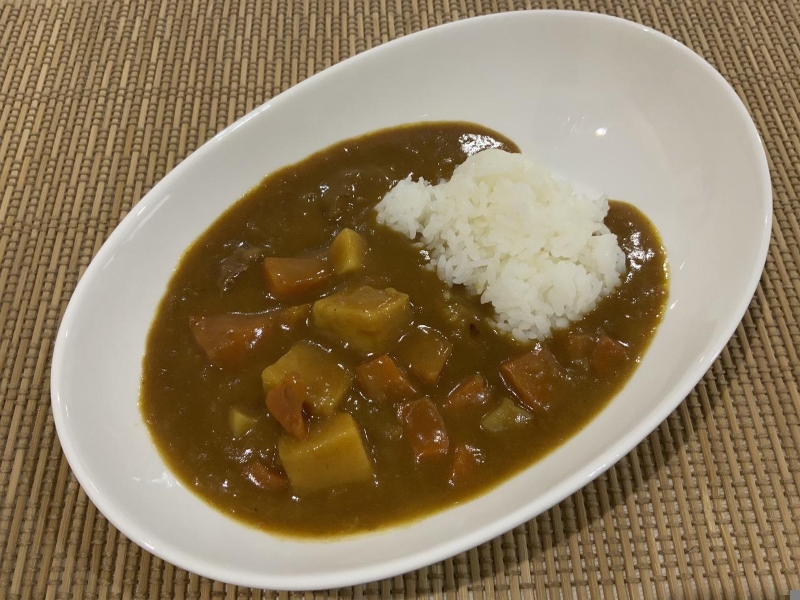
Kare Raisu
In Japanese cuisine, there are three basic types of Japanese curry. Curry rice or kar raisu or rice with curry, curry udon or noodles with curry, and curry bread or a curry-filled pastry. Japanese curry is one of Japan’s most popular meals in Japanese streets. The popular “curry rice” is frequently referred to simply as “curry.”
Japanese curry has a wide variety of vegetables and meats in addition to the sauce. Onions, carrots, and potatoes are the most basic veggies. The most popular meats are beef, pork, and chicken. Katsu-kare is a Japanese curry sauce-coated deep-fried cutlet (tonkatsu).

Japanese Crepes
Crepes are another popular street food in Japan. This delicious treat is originally a French dessert. It was invented in France in the 13th century and is now popular in many nations across the world, which includes Japan.
Japanese people like modifying this Japanese crepe by adding fillings such as chocolate, fruit, whipped cream, and ice cream. Unlike French crepes, they are not presented on a platter. Instead, they’re wrapped in a paper casing and folded into a cone.
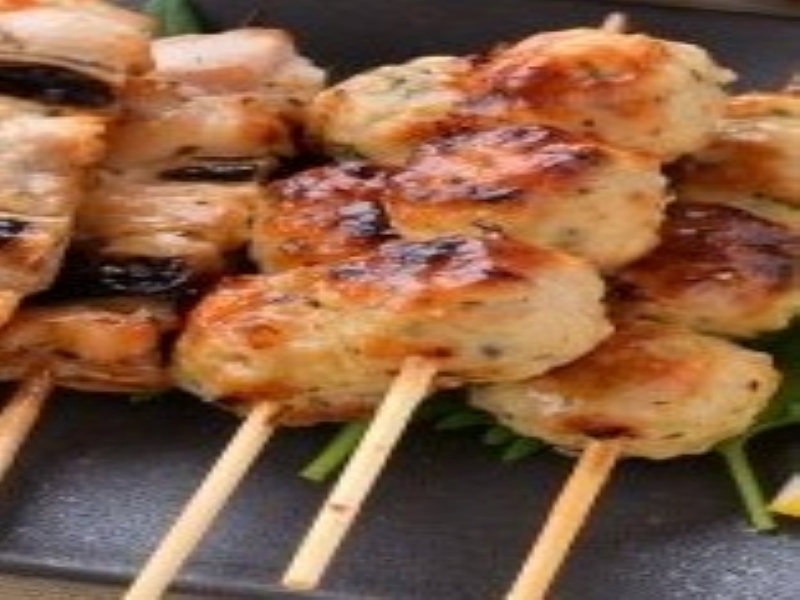
Yakitori (Japanese Skewered Chicken)
Yakitori is a skewered chicken dish popular in Japan. It is prepared by skewering the meat using kushi, a skewer made of steel, bamboo, or other similar materials. Following that, they are roasted over charcoal. The meat is usually seasoned with tare sauce (soy grilling sauce) or salt during or after cooking.
The meat is chopped into small, fairly uniform shapes and skewered with kushi to ensure equal cooking. The yakitori are then seasoned and grilled. Cooking with charcoal is recommended because it creates great heat and intense flames while emitting little to no water vapor. This enables the contents to cook fast while yet giving the skin a crispy quality. Although gas and electric heat sources can be utilized to cook yakitori, they do not offer the same fragrances or textures as charcoal-cooked yakitori.
There are several different types of Yakitori, however the most famous are Negima Yakitori, which is made of juicy chicken thigh with green onions, and Tsukune Yakitori which is chicken mince.
Food court places, sporting events, Japanese bars, and high-end Japanese restaurants are all common places to have this delectable street food. Chefs at certain high-end restaurants even seek for exotic chicken breeds for their unique flavor and texture.
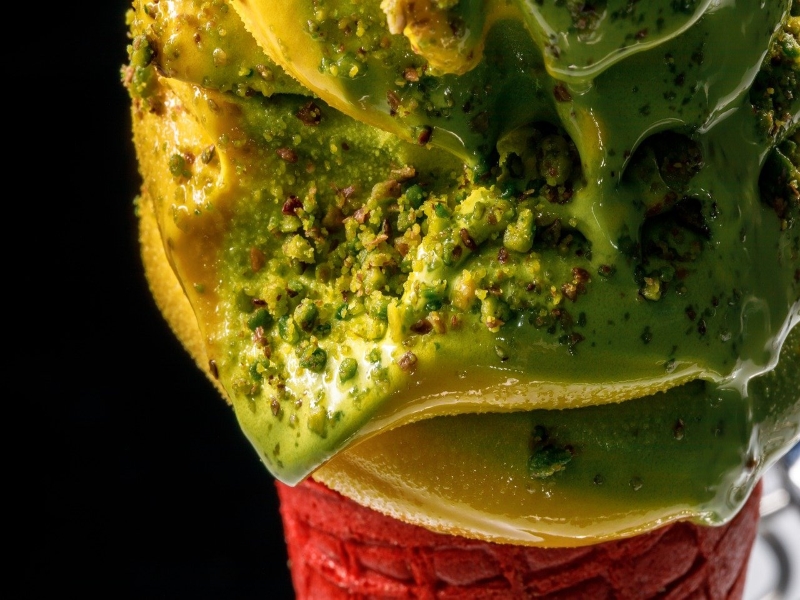
Soft Cream (Japanese Soft Serve Ice Cream)
Soft serve ice cream is known as soft cream in Japan. Soft Cream is creamier and thicker than regular soft serve and may be bought in festivals, markets, and convenience stores around Japan.
Japan is recognized for its dairy sector, particularly in Hokkaido, which is why Japanese soft cream is so delicious. It’s great across Japan, but particularly in Hokkaido. Soft Cream is a definite must-try if you’re planning a trip to Sapporo.
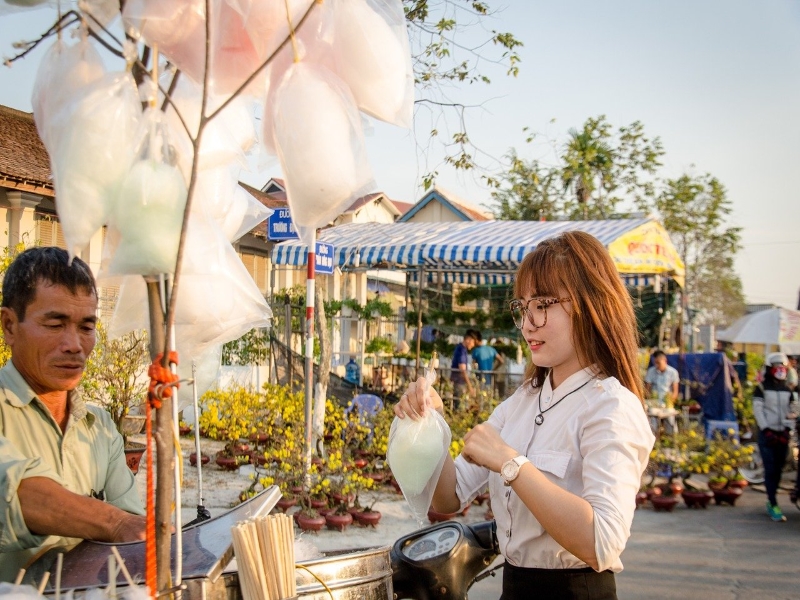
Wataame (Japanese Cotton Candy)
This delectable delight is a cotton candy from Japan that tastes like sweet, appetizing fluffy clouds.
Wataame may be purchased in street food stalls and festivals around Japan, where you can observe how the cotton candy is made around a stick or purchase ready-made cotton candy in packets.
As you can expect, Wataame is one of the most popular street foods among children because some packaging have manga characters to catch their interest.
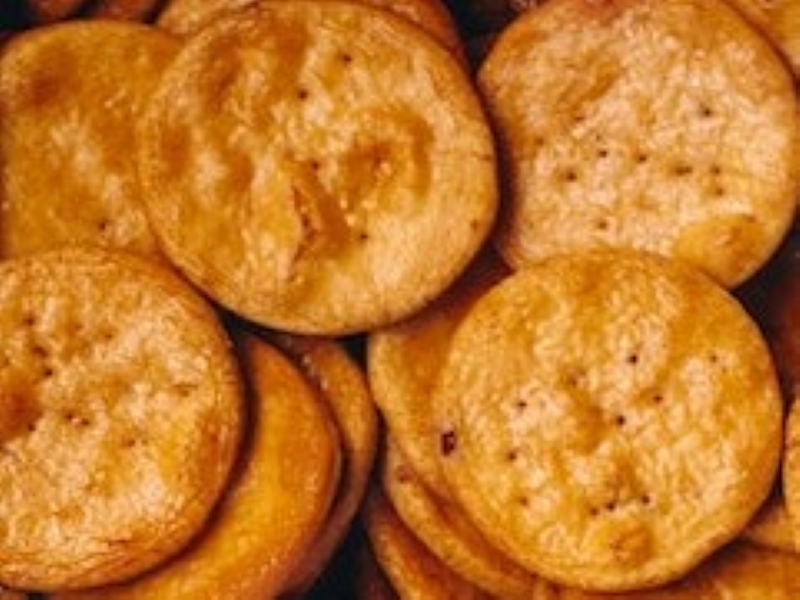
Senbei (Japanese Rice Cracker)
Another popular Japanese street food is Senbei. Senbei are a kind of rice cracker in Japan. They come in a variety of forms, sizes, and tastes, which are mostly savory but can also be sweet. Senbei are commonly served with green tea as a light snack and as a welcome treat to home visitors.
Senbei are often baked or grilled, with the latter being done over charcoal. They may be coated with a flavored sauce, usually composed of soy sauce and mirin, while being prepared. After that, they can be wrapped in nori. They can also be seasoned with salt or salad flavor.
Wheat flour or starch can be substituted for rice. Some types, such as sakana senbei (fish senbei), renkon senbei (lotus root senbei), and hone senbei (bone-senbei) are also being used as ingredients other than grains.
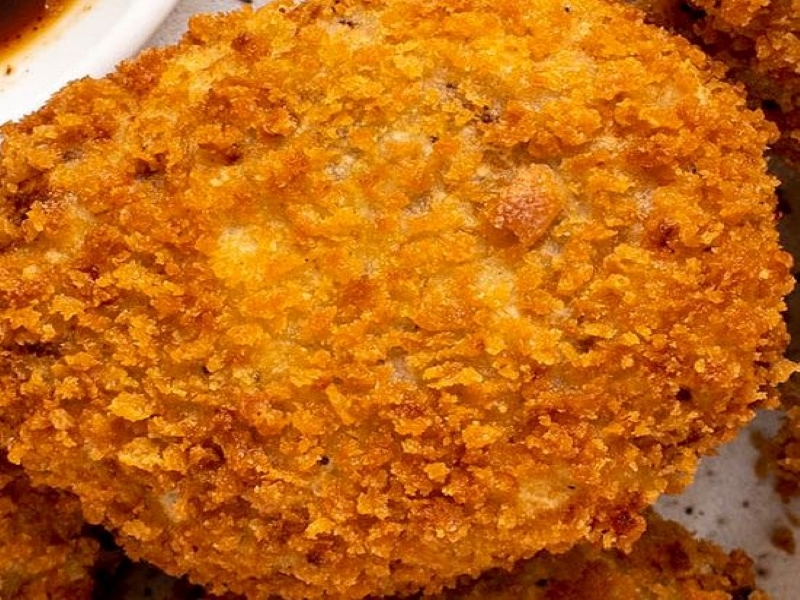
Korokke
Korokke is prepared by combining cooked diced meat, seafood, or veggies with mashed potatoes or white sauce, molding it into a flat patty, coating it in wheat flour, eggs, and Japanese-style breadcrumbs, then deep-frying it till golden brown in color.
Korokke is a famous Japanese street food snack that is easy to consume. It’s available in practically every supermarket and convenience store in Japan, and it’s popular for its flavor and affordable price.
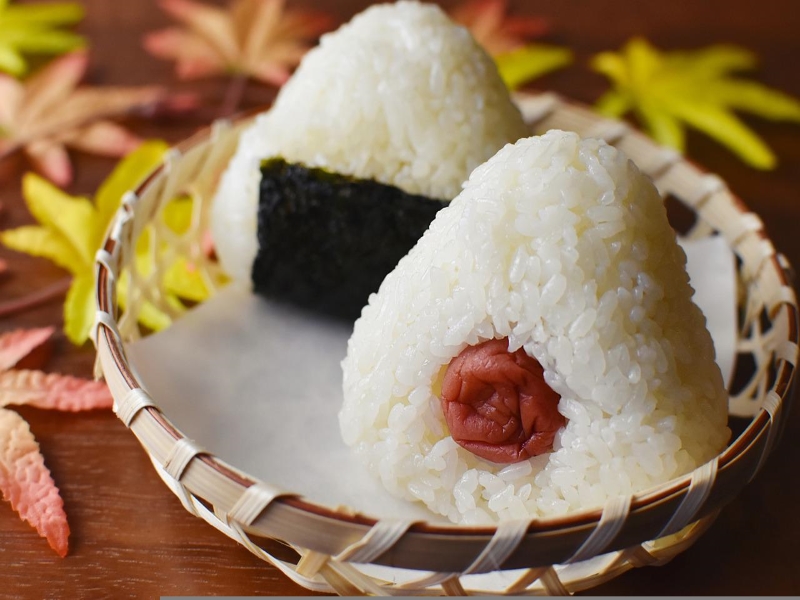
Onigiri (Japanese Rice Balls)
Onigiri is a traditional Japanese delicacy comprised of white rice shaped into triangular or cylindrical forms and covered in nori. As a natural preservative, an onigiri is traditionally loaded with umeboshi (pickled Japanese plum), katsuobushi, salted salmon, tarako, kombu, mentaiko, takanazuke (pickled takana), or any other salty or sour ingredient. Onigiri are available in a variety of contents and flavors at most Japanese convenience shops. There are also establishments that specialize in selling onigiri for takeout. Onigiri has become a famous staple in Japanese restaurants across the world as a result of the popularity of this trend in Japan.
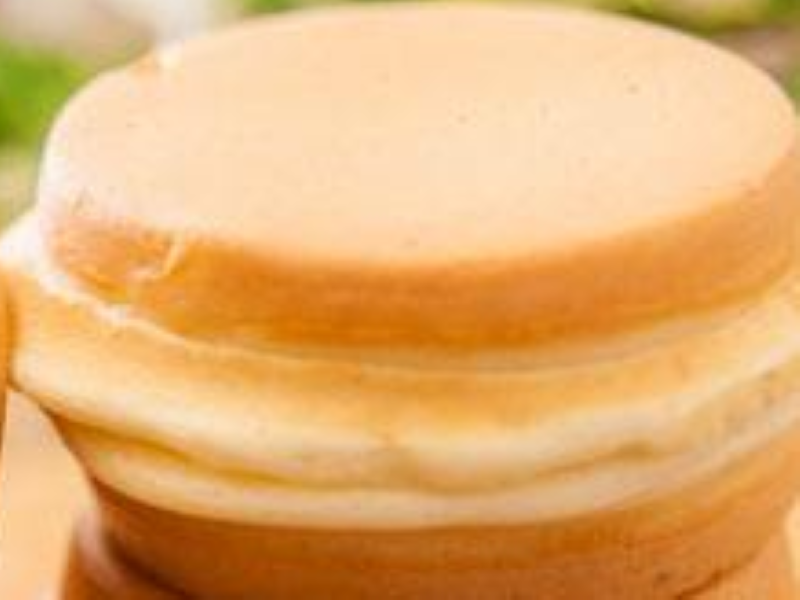
Imagawayaki
Imagawayaki is a traditional Japanese delicacy that may also be found outside of Japan, in places like Taiwan and South Korea. It’s produced with batter in a special pan and stuffed with sweet azuki bean paste, though other fillings like vanilla custard, various fruit custards and preserves, curry, various meat and vegetable fillings, potato, and mayonnaise are becoming more popular. Imagawayaki is identical to dorayaki, except the latter is made up of two distinct pancakes that are sandwiched together after cooking and consumed cold.
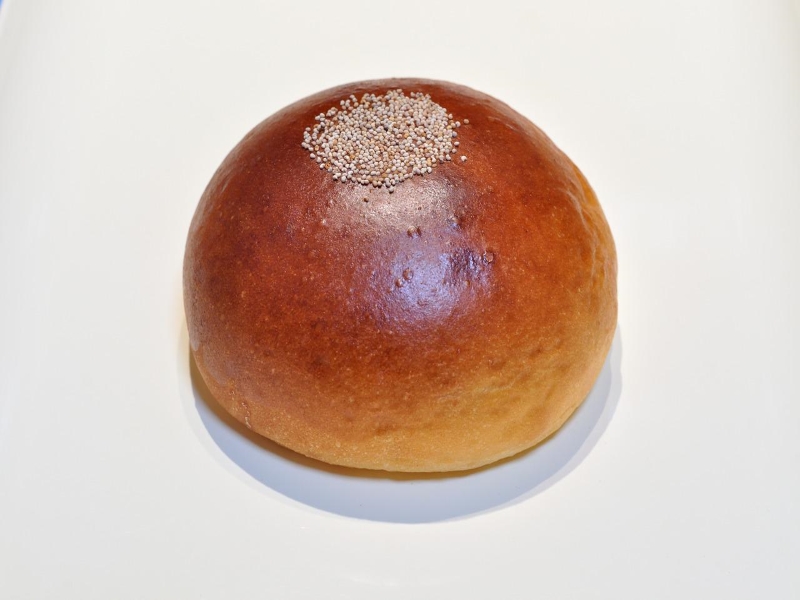
Kashi Pan Or Kare Pan (Curry Bread)
Also known as curry bread. It is a popular Japanese delicacy. It comprised of Japanese curry rolled in a piece of dough that is then deep fried after being covered in bread crumbs. It’s stuffed or garnished with jam, chocolate, sweetened azuki beans, or custard, etc. It is sometimes baked rather than deep fried, however deep frying is the most typical way of preparation. Curry bread is often available at bakeries and convenience stores.
Frequently Asked Questions
Fukuoka, the port city on Kyushu’s southern island, boasts one of Japan’s most famous street food cultures. Every night at about 6 p.m., small food stalls open in Nakasu, the city’s iconic entertainment zone.
Yatai. In Japan, a yatai is a tiny, movable food booth that sells ramen and other foods. The word means “shop stand” in English. The food cart is set up on pedestrian pathways in the early evening and dismantled late at night or early in the morning.
It depends. In Japan, however, street food is quite safe. You should visit a merchant who has a large number of customers. I would recommend eating in moderation if you have a sensitive digestive tract.
